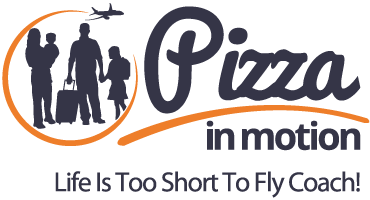Alphabet Soup! Why You Should Pay (A Little) Attention To Fare Classes

There used to be a simpler time when a ticket in coach meant a ticket in coach (and the same for first class). For the most part, you’ll still be able to tell what cabin you’re sitting in when you book an airline ticket nowadays. But, those individual fare codes spell out some areas where customers are “winning” and “losing” as airlines change the rules.
That’s what Stephanie Rosenbloom of the New York Times was talking about with me earlier this week. I grew up in New York with the Times and it’s pretty cool each time I’ve been quoted in an article. One of the things that Stephanie and I discussed is how American and United now have a more aggressive path to elite status based on the fare you’re buying.
Late last year American Airlines announced new rules that allow for up 3 times as many Elite Qualifying Miles (EQMs) when you buy certain fares. Most discount fares will earn you 1 EQM per mile flown, but fares in Y, B and W will earn you 1.5 EQMs per mile flown. United Airlines followed suit on these changes. They already had some fare classes that earned elite qualifying mile bonuses (PQMs in United-speak). With United essentially matching American on this point you’ve got two airlines where those letters matter if you’re trying to earn elite status. Quoting from the article:
But consider another major benefit: If you’re trying to reach the next level of elite status, the right fare class can get you the qualifying miles you need — and fast. Look for fare classes on American that offer three qualifying miles per mile flown and, on United, classes that earn 300 percent of the miles you fly. “Both of them have a faster path to status for folks who spend more on their tickets,” said Edward Pizzarello, a founder of the frequent-flier forum Milepoint (now InsideFlyer.com), and the author of the travel blog Pizza in Motion.
We also discussed how the shift towards revenue-based frequent flyer programs for American, Delta and United has also resulted in adjusted reduced earning in a number of situations when flying on alliance partners. That’s a real shame since the whole point of alliance partners was to receive similar treatment no matter which partner you were flying on. While these changes can cause heartache for folks traveling on partner flights, all is not lost:
Remember: You don’t have to fly the airline to accrue enough miles for a free ticket. Mr. Pizzarello said that with flexible credit cards such as Chase Sapphire Preferred and American Express, you can earn points with your everyday spending, then transfer them to a partner airline, such as Singapore Airlines or British Airways, for an award ticket. “I always look at those cards as top-off opportunities,” he said. And if you want to get creative, there may be instances where it’s desirable to top off your miles on the partner airline to get an award on your primary carrier (for example, a domestic United Airlines flight using the Singapore partner award chart).
Credit cards that earn flexible currency are a great tool for a successful strategy for optimizing your airline miles. I’ve relied heavily on Chase Ultimate Rewards and Starwood Preferred Guest as transfer partners over the years. Because you can transfer as many or as few miles as you want, it’s easy to transfer just enough miles to book an award with a specific airline. But, what does this have to do with fare codes?
Great question. One of the examples that Stephanie and I discussed was the free agent traveler who splits their travel between a few different airlines and doesn’t chase elite status. They might decide it’s better to credit United flights to Singapore Airlines’ elite program, and then use their Chase Ultimate Rewards or American Express Membership Rewards to top off their account and redeem an award. They can even do so on United, though that would mean booking the ticket as a Singapore partner award. I can’t claim this as an original thought. Just about a year ago, View From the Wing outlined this nicely for folks.
Previously, Turkish was one of the places to consider crediting these flights, and an airline I was more familiar with than Singapore. But, as the airlines change rules, we need to adapt to the best way to continue to get value for our travel dollars.
One last note on fare classes, and that’s the growth of “Last Class”. The alphabet soup is bound to get a bit murkier when American Airlines rolls out fares later this year that come with less benefits (potentially seat selection, access to upgrades and complimentary checked bags as well as the ability to change your ticket). They’re doing this so they can be more profitable when they match prices with the likes of low-cost carriers like Spirit. Delta already has fares like this (called Basic Economy).
As a general rule, they’re pretty good about calling attention to this when customers book. But, that doesn’t always have to be the case.
Reading the fare rules and understanding what you’re buying before you buy is key. In most cases, you won’t get burned. But, it only takes one mistake to leave a bad taste in your mouth.
I plan to do another post that will show some visuals on fare classes and different types of tickets in the future, but I’m happy to answer any questions folks have in the interim.
